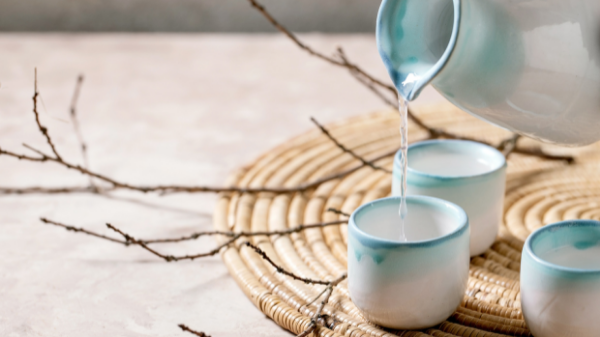Sake is a popular Japanese alcoholic beverage processed by fermenting rice with koji and water. It is a unique drink steeped in tradition rituals and customs that are worth knowing when drinking with colleagues or friends.
How to order
When ordering sake, there are a few main types that are often sought after. Junmai-shu, Ginjo-shu, Daiginjo-shu and Honjozo-shu are among the most popular types of sake. Each one is brewed in slightly different manners and can differe quite uniquely in taste.
- Junmai has a rich and full body that is higher in acidity and served hot.
- Ginjo and Daiginjo, on the other hand, are typically served chilled, or slightly below room temperature, to highlight its flavors. The former presents an aromatic flavor while the latter is more fragrant and full bodied.
- Honjozo-shu is light and smooth in body and flavor and is best served warm
How to drink
There are many different sake, and like wine, they can be served either hot, cold, or at room temperature. Unsurprisingly, hot sake are popular during the colder season , while chilled sake is a refreshing option during the warmer days. However, there is no strict rule on serving temperatures as it is a versatile beverage that is delightful to drink at any temperature that fits your preference, so don’t hesitate with experimenting with drinking sake at temperatures.
Being served
Different social settings may call for different customs and traditions, While in business settings, it is customary for the colleague with the lowest position to pour the beverage for the highest position; in family gatherings it is the youngest to take that place. Either way, when being served, always present your cup by holding it in your right hand while your left gently supporting the bottom.
Serving others
Whether you were the first to pour or were on the receiving end, after everyone has started drinking, the sake will be poured by everyone throughout the meal. This is done by firmly holding the bottle with both hands; or depending on how small the flask is, you can hold the bottle with your right and keep your left supporting your pouring hand. One rule of thumb to always remember when drinking, to never serve yourself.
When you’ve had enough
Rejection can be taken a rude gesture in Japanese culture, so one way to indicate that you’ve had enough to drink is to not leave your cup empty. Keeping some sake in will let your companions know that you are not not ready to be served.
Kampai!
Finally, knowing the ins-and-outs of the etiquette of drinking in Japanese culture, all there is left to do is to cheers to a good meal and long-lasting camaraderie. Do this by cheering “Kampai!”



